A pre-release of the new InstantDebriefing is available now. Part of major functional upgrades is this visual summary of the method:
Feel free to check the pre-release or download this A4 Poster, explaining InstantDebriefing in a nutshell.
research blog supporting instantdebriefing.com
A pre-release of the new InstantDebriefing is available now. Part of major functional upgrades is this visual summary of the method:
Feel free to check the pre-release or download this A4 Poster, explaining InstantDebriefing in a nutshell.
As of December 2016, InstantDebriefing is offering 17 models for you and your team to debrief your team team roles & team dynamics.
Some of the models are easy ice-breaking models, others are designed towards a more refined understanding of behavior. Check them out:
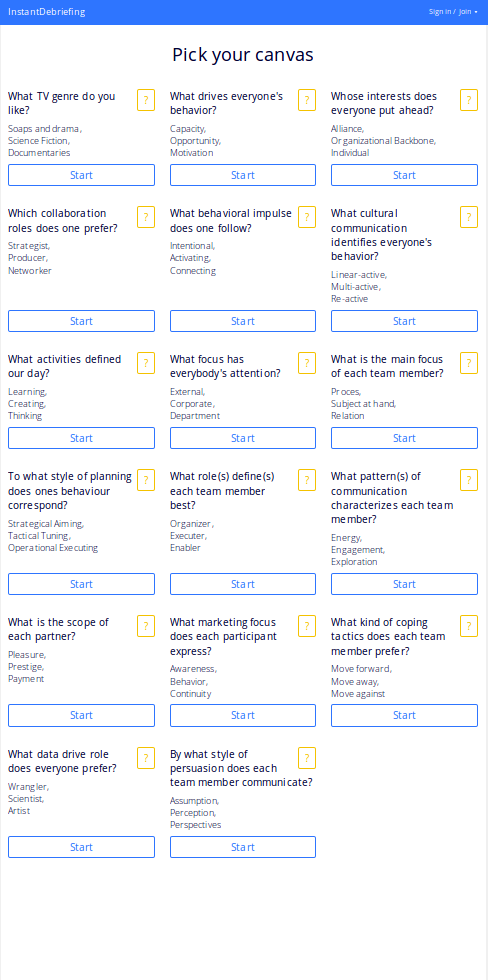
InstantDebriefing is a catalyst for small-group dialogues. Debriefing roles and discussing behavior enables teams to explore individual assumptions and perspectives within otherwise non-productive, veiled or hidden dynamics.
You never know … your team effectiveness might just enhance through an improved individual understanding.
InstantDebriefing offers a fast and low threshold way for you to improve understanding about social and productive team dynamics. Try it now together with your team mates at instantdebriefing.com
Project volumes, program complexity and sharp deadlines ask for lean team work. Nonetheless team work can be tough. Sometimes I wonder how teams manage at all. Creativity and humour help:
“There is no I in eagle” -Adri Kamp, miller at Molen De Arend, Terheijden, the Netherlands.
http://www.molendearend.nl/
This article explores a framework on organizational interaction and team dynamics. It states why facilitation of a profound dialogue improve team results. The article concludes with conditions that support a deepened dialogue. Finally it introduces a prototype for team evaluation and a method for debriefing.
TEAM WORK IS TOUGH WORK
Organizational advisers usually de-pressurize a context and build a first level of trust through LSD: Listening, Summarizing and asking Deeper questions.
“Communication about blockades is the job of an organizational advisor, although most people would like to avoid this” – Hans Vermaak
Negotiators work alike, yet through a more direct method. For example, the approach ‘Let them sweat first’ pulls a negotiation through three phases:
Each in their own way these styles deal with ‘paralysis before analysis’. Both harder and softer approaches apply to a better team understanding. Both are about opening up and narrowing down.
OPENING UP BY ENTERING TWO HEADED PERSPECTIVES
Dialogues are both in depth and superficial at once. They are layered. A dialogue can be substantive, process-oriented and also targeting behaviour. Especially while opening up a dialogue towards a better understanding of needs and blockades, a variety of topics on team dynamics arises. Here are three common – but inconclusive – categories useful for describing team dynamics:
Contextual dualities
Let us dissect a basic alliance. Assume three representatives acting as agents on behalf of three separate organizations. Such an alliance can be about building the New Orleans water barriers, about a think tank on the morality of epigenetics or a about government & industry working together in crisis response teams.
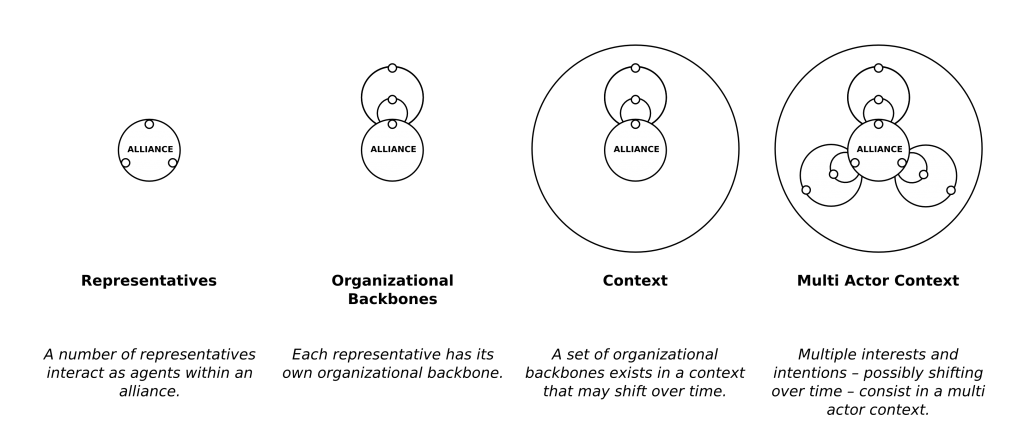
Each representative has its own organizational backbone. Together these organizational backbones exist in a context that may shift over time. When we are performing a complex task for the first time, perhaps even with unacquainted team members, time might not be on our sides. The frame of the original assignment may even shift. Think about political shifts, organizational changes and personal development.
Simultaniety
There is much going on at different levels of such a multi actor context. The extent to which people are able to cope with simultaneity is questionable.

Looking from a helicopter perspective, meandering transitions are influencing team work. These transitions are both plastic and robust. Take for instance how a new law – the ultimate dream of each lawyer – also attracts new workarounds – such as the ultimate playground of a computer hacker or a tax accountant. And vice versa. Plasticity and robustness go hand to hand:
“Careful analysis of what happens during development suggests that it is no longer helpful to retain a hard and fast distinction between robustness and plasticity” – Bateson & Gluckman
Source: Bateson and Gluckman, 2011, Plasticity, Robustness, Development and Evolution
Let us zoom in onto the level of organizational constellations. Here we can distinguish a chaotic as well as an entangled perspective. Alliances are interwoven compositions. Compositions one can disentangle. Alliances are also merged composites. Composites with blended components. This holds for hierarchical and behavioural tructures:
“… complex systems arise from both entangled and blended connections of primary self-interests and thoughtful community concerns” – Geert Teisman
Source: Geert Teisman, 2007, Publiek management op de grens van chaos en orde
Narrowing down to the team level, small subgroups are present. Both cooperation and competition push and pull individual interests, behaviour and decision making. For instance, when working together, people compete ‘automagically’ and often unaware for attention. People want to be heard. People want attention for a personal bandwagon. People want to feel included.
Stepping into the smallest level, we enter the level of individual decision making. Here we distinguish several perspectives of simultaneity: our stress and reward system, subconscious decision making versus rational explanation and dealing with both measurements and predictions, to name a few.
So within a multi actor context there are many dual or paired themes. We could say ‘where there is cooperation, there is competition’. I use this two-headed monster as a visual reminder:
Copyright Sesamestreet
Biases
Biases can be more or less explained as unfair prejudices. They are useful for individual decision making and dealing with dualities. Cognitive biases can also be unfair prejudices towards the group or oneself:
“Cognitive biases describe how people are expert in creating seemingly rational and subjective explanations of personal behaviour and perception – Kahneman & Frederick”
Source: Kahneman, Daniel; Shane Frederick (2002). “Representativeness Revisited: Attribute Substitution in Intuitive Judgment”. In Thomas Gilovich, Dale Griffin, Daniel Kahneman. Heuristics and Biases: The Psychology of Intuitive Judgment. Cambridge: Cambridge University Press. pp. 51–52″
Cognitive biases lure and have the power to paralyse team efforts and results. Group thinking, social pressure, fundamental attribution error and bounded rationality are just four of many biases.
There are different types too. Behavioural biases are for instance the hindsight biases ( I knew it all along ) and loss aversion ( Losses loom larger than gains ). Examples of social biases are the halo effect ( Whis is why we take a selfie with a celebrity ) and in-group bias ( George W. Bush: ‘You are either with us or against us’ ). There are also memory biases, example given, false memory and the spotlight bias.
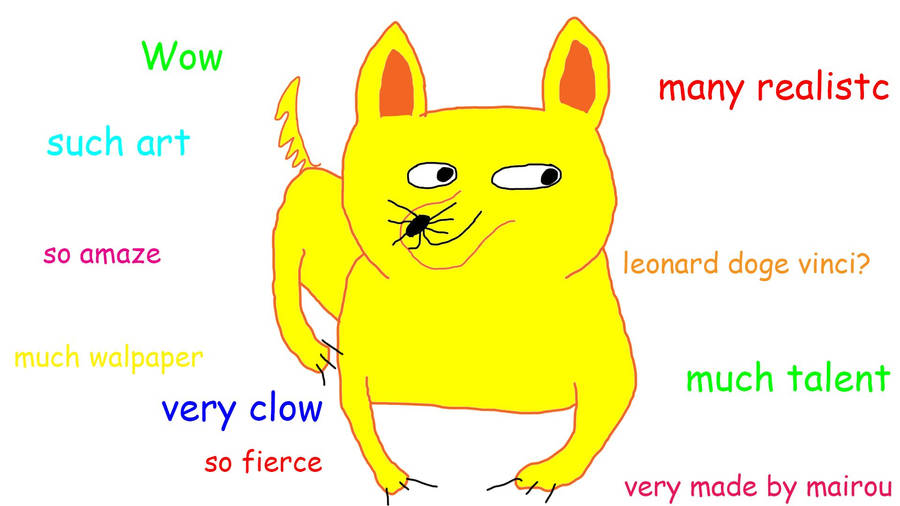
The class of memory biases are interesting, because it touches how we tick. Marketeers, teachers and parents might agree that repetition influences memory. It creates a truth. A brain scientist might describe this as:
A single stimulus strengthens the synapse (short term memory) where repeated stimulation causes kinases to move into the nucleus, leading to gene expression and growth of new synapses (long term memory) – source not documented
Read more at http://www.z11org.nl/documents/10156/67807/Swaab.pdf & Molecular mechanisms of short and longterm facilitation
Or more popular: ‘Cells that fire together, wire together’. This means that a memory bias can distort perception. Through such distorted perception, a memory bias influences behaviour. Declaring a false statement – obtained under pressure – unfortunately is an everyday example.
Furthermore, influencing behaviour not only leans on repetition but also on emotion:
“Emotions and memories are tightly interwoven” – Barry J. Gibb
Source: 2012, The Rough Guide to the Brain
Because emotions and memories are interwoven, we can assume that emotions too have the ability to drive or lock our behaviour. Just like you feel like going for a quick run when the morning sun is shining.
Now we know many cognitive biases help us make individual decisions. We also have a strong indication that these biases can catalyse as well as undermine team results. So how can we make best use of them?
NARROWING DOWN ON ASSUMPTIONS
The range of everyday biases suggest that making assumptions helps. Biases seem to have evolved to support human decision making and dealing with simultaneity. The catch is that many assumptions might be firmly grounded in biases. These are biases that are more or less distorting our perception of reality.
A profound dialogue – five conditions
Now suppose team members would like to overcome such distortion by exploring mutual assumptions. What conditions would help teams becoming more effective?
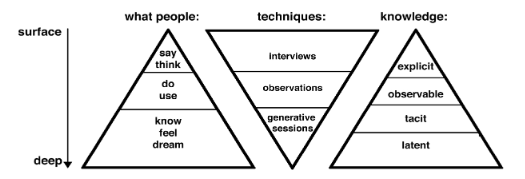
Act smart in an early stage
Effective teams ask for a constructive open dialogue. Such a dialogue needs actively unveiling of assumptions. Using the right method this can be done Specific, Measurable, Attainable, Realistic and Timely. You can now imagine how the inability to unveil assumptions will result in costly and time consuming corrections later on.
Facilitate your team dialogue
The fact that you are reading this blog post assumes that you are already acquainted with InstantDebriefing. InstantDebriefing is a prototype intervention. An app supports the method for opening up a dialogue.
Feel free to use the demo. Facilitate evaluation and feedback in your team meetings. I appreciate your ideas, requests and responses via hello [ at ] instantdebriefing.com
If you wish to share a lightweight version of the ID concept, without referencing the underlying framework, feel free to link to my guest blog at Vroemen.org explaining 6 reasons to use InstantDebriefing.
This post explores the boundaries of better memory through drawing. It mixes science and popular culture. A prelude about Open Access and Machine Learning – accompanied by some mind refreshing memes – paves way for subjects as memory, transfer, dialogue and debriefing.
The numerous links and abundant memes are to inspire you and invite you to reply.
First things first: a modest hip hip hooray for social science!

:: Open Access – a prelude
Why ‘Make Cake it so’? It is just that with the current critiques of the methods applied in social sciences in mind – such as a likelyhood of irreplicable findings – the article that triggered this post is doing just fine. Hooray! The description of the applied methods seems sufficient for basic reproduction of the research findings.
Complementary cheers because the text arrived like an Open Access gift, just like already-paid-for-science should be. Therefore a call to all Deep Learning Connectionists and Generative Evolutionists: Please continue your work. You are lifting the imperative comprehension of today’s landscape – scattered scientific literature – to the next level of machine learning; a level that is applicable to domains of jurisprudence, game theory and health care, to name a few.

Why specifically address Connectionists (who study learning by networking) and Evolutionists (who study learning by algorithmic selection – not to be confused with creationists)?
Correct, that would be incomplete and perhaps even inconsiderate to Symbolists (who study learning by manipulation of symbols), Bayesians (who study learning by specific probabilities) and Analogizers (who study learning by a more or less a human interpretation of probabilities). This Dutch newspaper article by Bennie Mols recently summed up five learning approaches, whilst referring to The Master Algorithm, a book by Pedro Domingos (2015). This book is not intended for experts on Machine Learning but merely for laymen who are looking to be inspired, according to some reviews I glanced at Goodreads. But hey. The downer comments – mostly provided by experts – seem to read exactly like those on other popular but inspiring science books like Critical Mass and A new kind of Science. Recursive feedback – by explaining the range of scientific expert approaches – seems appropriate here.

Still, why applaud Connectionists and Evolutionists? Open Access is nothing when we cannot compare accessible content. Both accidental Sampling Bias and deliberate Data Polishing are always luring. Over time these two learning approaches are able to deal with large amounts of information, better and better, and most likely by the lending hand of the other three approaches. If they do not succeed we keep accepting blind spots in growing data collections and singularly gravitate towards data we want to fit our findings and toward articles we prefer to believe.
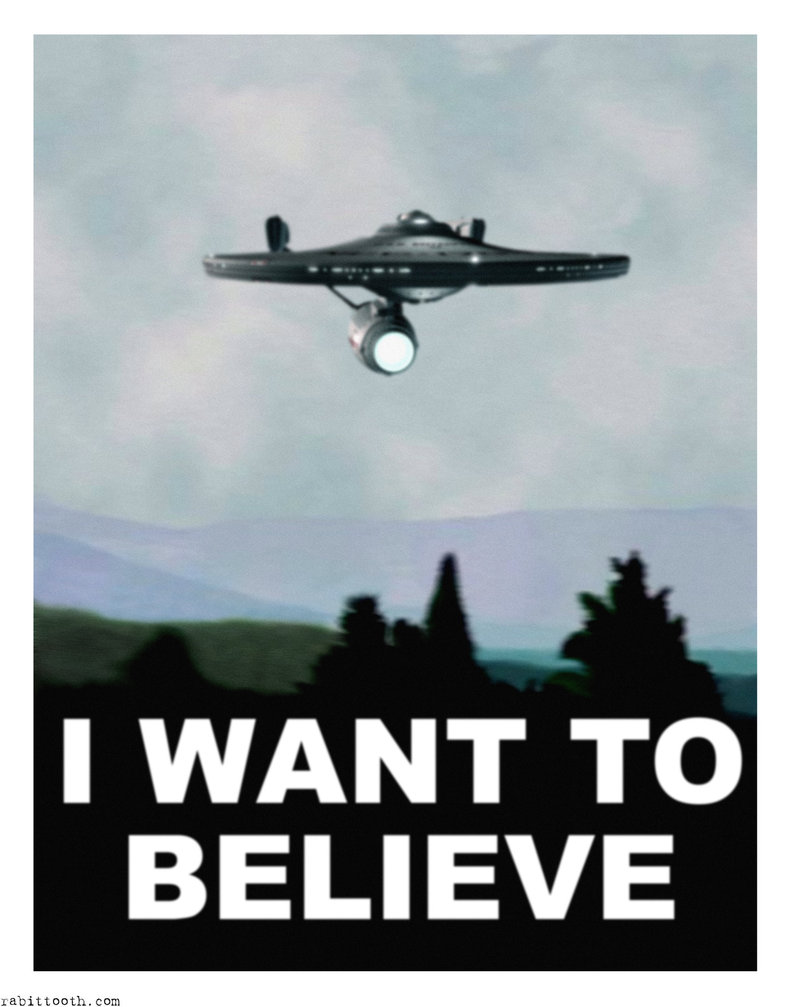
:: drawing improves memory – the article
So this post is about an article. Let us explore the boundaries of The drawing effect: Evidence for reliable and robust memory benefits in free recall. See the source below * .
@Dennis Luijer from VisuallyYours: You deserve a round of Applauso for sharing the Time.com article via FB.
Honestly, I want to believe the article’s conclusion:
We propose that drawing improves memory by encouraging a seamless integration of semantic, visual, and motor aspects of a memory trace.
Why? Such a proposal can revamp business models. Just imagine how it could dethrone the 3M Post-it® cash cow and top rank the 3M™ DI-NOC™ Whiteboard Film at the 3M portfolio:
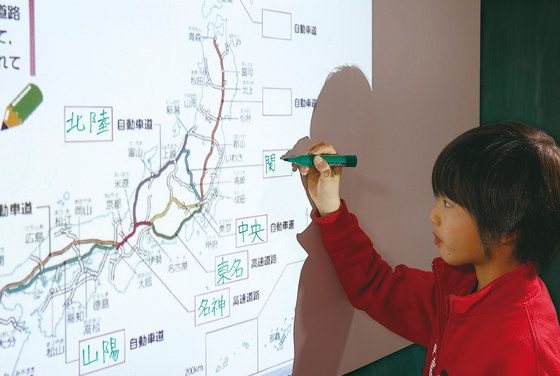
However the slogan ‘The “write” way to create whiteboard’ would need some 2016 copy writing, according to the Wammes’ proposal.
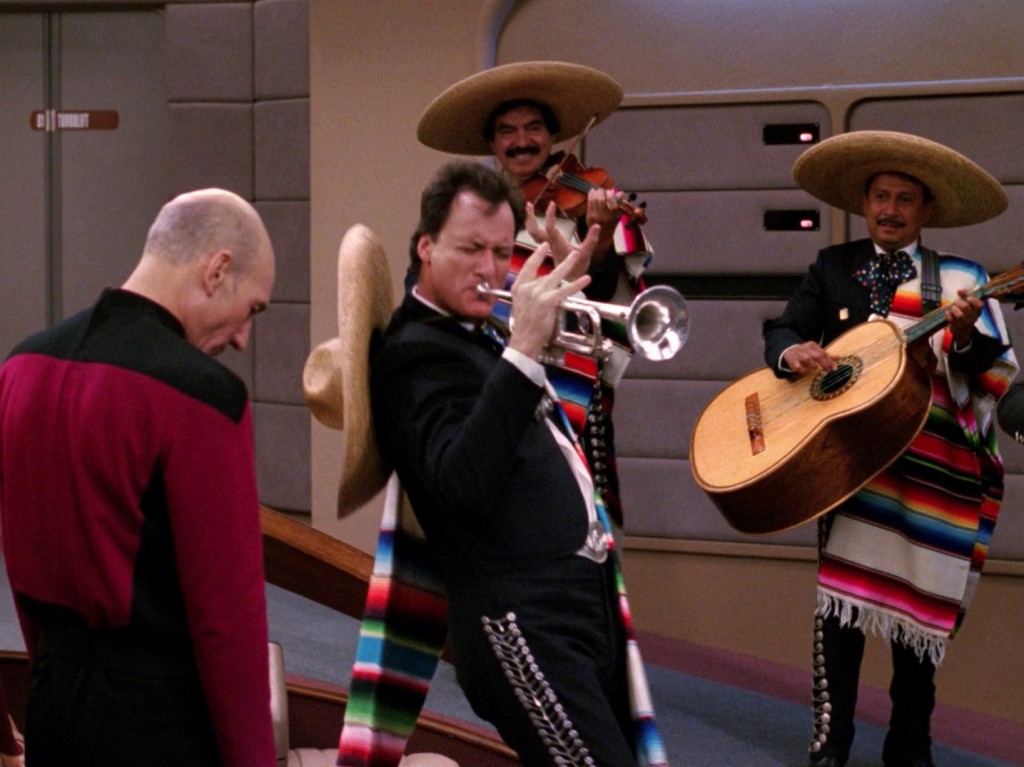
:: memory
So writing does support your memory tracing less than drawing does.
But wait. Is it that simple? Suppose we extend the ‘free recall part’. Suppose you want to remember a story instead of a (grocery) list. Would you then draw a map or create a ‘mind palace’ to support your brain tracing the content of a Bible, an episode of the Horace and Pete series or let us just say an article on Wikipedia?
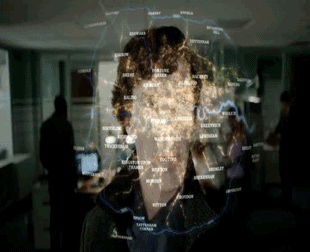
I wonder how many pages or many days of performance it would take to trace and remember other types of content, like stories. In fact, everyone should make a drawn copy to trace his/her memories to make it work. Efforts would soon outgrow the creation of a graphic novel or a theatre play. Come on, bring your sketchbook into the theatre:

:: tangibility
As a father as a man I tend forget. I therefore secure intentions by placing objects in plain sight, simply because I learned the default behaviour is strong in human kind. I create a grocery list to shop. I place the list tactical to remind me to shop. I use a cabinet to place and prioritize urgent and important requests through physical mail. And create competition for my grocery list.
This makes me wonder about the tangible aspect of drawing. Let us learn by analogy and suggest that not only drawing but also building with LEGO, playing with Play-Doh clay and even dancing ‘improves memory by encouraging a seamless integration of semantic, visual, and motor aspects of a memory trace’.
To be more precise, LEGO® SERIOUS PLAY® describes part of the LSP method as:
Thinking with your hands.
Read more about the cool method via this Open-Source- but-not-anonymously-accessible-Open-Access PDF.
:: transfer
Creating with LEGO does clear your head. And LSP adds up to that. LSP strongly builds on learning by creating metaphors and by storytelling about ones creation:
This concept of knowledge transfer is better explained by the work of Sanders (1999) and build upon by Sleeswijk-Visser et al:

Bluntly summarizing the figure above: Explaining their creations help people share latent knowledge. Feel free to check this source about context mapping to learn more.
:: dialogue
Back to reality now.
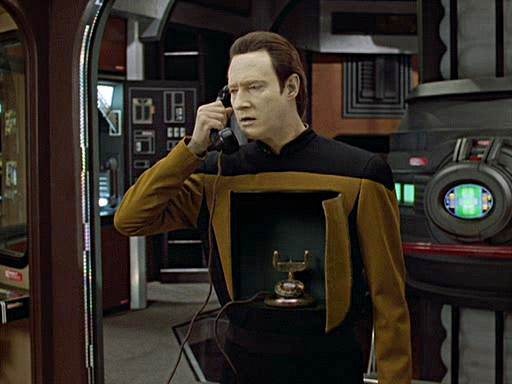
Let us assume that drawing 0bjects from a list indeed helps us remember objects from a list.

Does this also work out for remembering more abstract concepts? ‘Money’ is easier to draw than ‘Banking System’ or ‘Value’. It is another league of Pictionary. Perhaps most of us simply missed essential training in creating drawings of more abstract concepts:
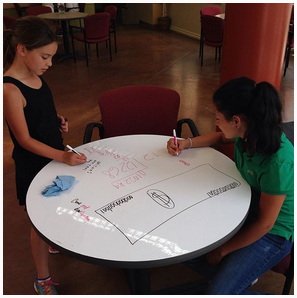
And how about the understanding such abstract objects, now visible and tangible, modelled and expressed by our minds and bodies, as opposed to being written?
Not having heard something is not as good as having heard it; having heard it is not as good as having seen it; having seen it is not as good as knowing it; knowing it is not as good as putting it into practice.
Source here.
:: debriefing
Debriefing techniques already support (collective) memory and transfer through dialogue. For example, one technique uses two circular arrays of chairs where participants are only allowed to contribute to a dialogue while seated within the middle circle. This technique was kindly introduced to me by Elizabeth Tipton at a 2014 ISAGA workshop on Debriefing:
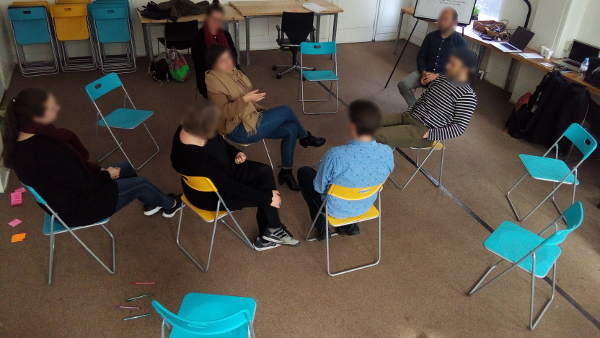
I am interested in Visualizing the Understanding of Relationships: to what extent does a visual intervention make collaboration more effective? How would that intervention work and look like? What skeleton methodology is necessary to safely cut out an external facilitator?
To find out I developed a prototype (not a solution) available at instantdebriefing.com.
Note: As I write this post we are automating the renewal of the Certificate Authority via the free, automated and open LetsEncrypt service – in order to automagically keep your data safe and freeing up my time for maintenance – so if the site is not working please let me know.
Instant Debriefing uses a digital drag-drop ‘drawing’ style. The approach lets team members place avatars of team members onto a model and unveils blind spots and assumptions:
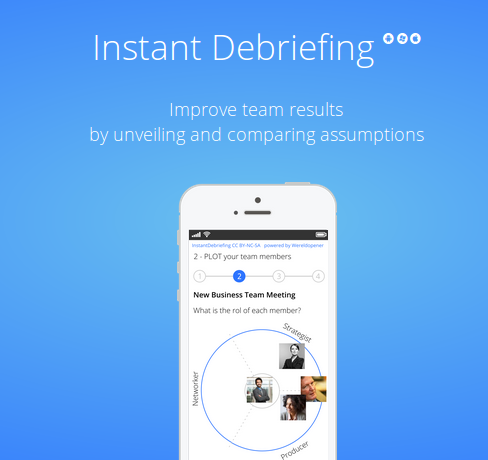
The app and method are designed to stimulate a dialogue about latent – behavioural – knowledge.
Instant Debriefing builds on creation and digitally filters mutual assumptions, stimulates storytelling as part of a debriefing method. Wammes’ proposal builds on drawing and memory. There is a hunch about tangibility, mixed sensory input and transfer of knowledge. But how can I build upon the work of Wammes et al?
Bummer. I do not know. Literature does not yet seem to provide me with an acceptable answer nor direction. Perhaps I just cannot give meaning to the knowledge already out there without proper training in available Deep Learning tools to prevent my sampling bias.
:: prototyping
Heads up. I do follow a few guiding principles. Here are three. Keep on prototyping while learning. Test with dummies. Debrief once in a while.
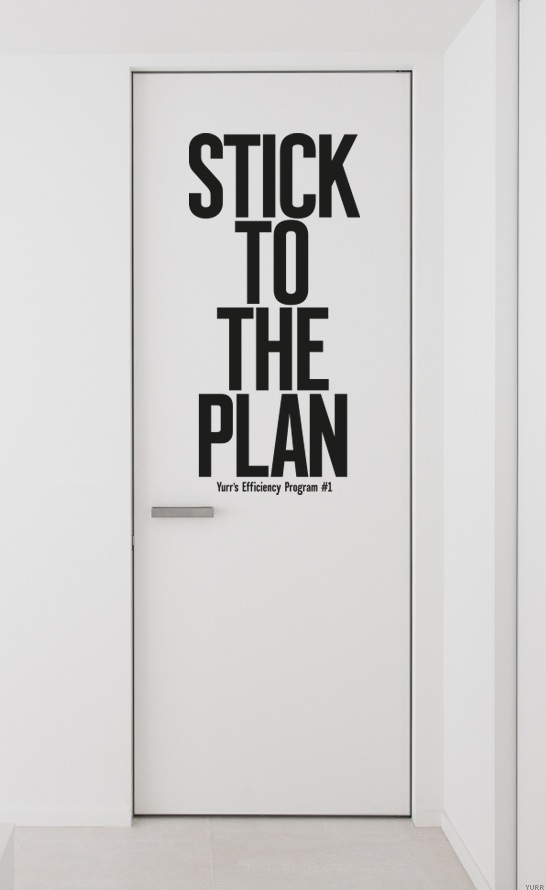
Join me and feel free to use InstantDebriefing to boldly go where no tech-enabled (hu)man has gone before.
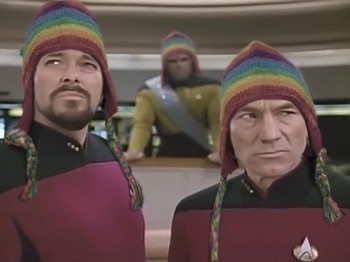
Join me in my quest by commenting or writing back. Write a letter if you prefer:

Join me by drawing a grocery list once in a while, instead of writing it. So we can leave the list at home simply because now we remember the items drawn on our lists. Whether it seems silly or not, draw more:
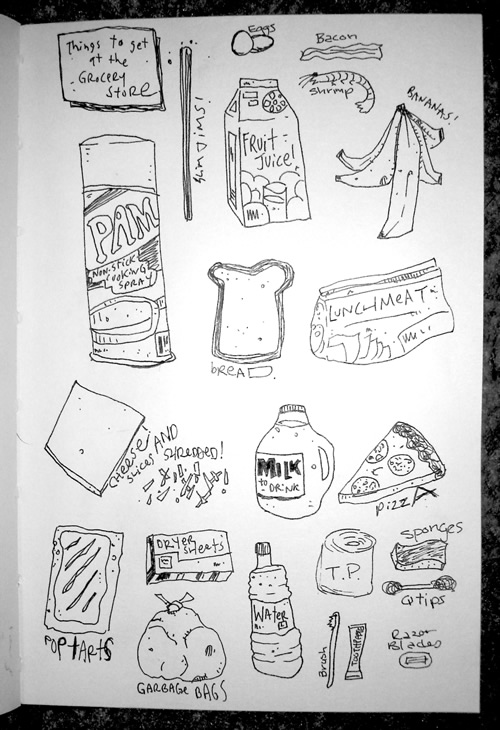
Original article: THE QUARTERLY JOURNAL OF EXPERIMENTAL PSYCHOLOGY, 2016 Vol. 69, No. 9, 1752 – 1776,
http://dx.doi.org/10.1080/17470218.2015.1094494 by Jeffrey D. Wammes, Melissa E. Meade, and Myra A. Fernandes
Department of Psychology, University of Waterloo, Waterloo, ON, Canada
There is no question that debriefing is one of the most important learning phases. It is also clear that it is mostly an unwanted monster.
A couple of years ago in an attempt to better facilitate collaboration between organizational alliances, I started to explore visual dialogue support systems.
Now, I have developed one myself to learn about improving a team dialogue. I am especially interested in the flipside of expressing behavioral blindspots, mismatched assumptions and (un)veiling intentions. This blog provides some contextual information.
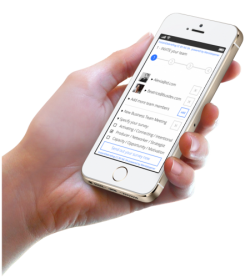
So far early versions of this approach lead to debriefing of several small teams.
And I am now ready to open the demo-app for a few more beta testers who are interested in helping me figure out ways to improve team results through instant debriefing.
I wish to offer a more complete evaluation version of the app – beyond the basic demo version. In return, your feedback will help me setting up cases and collecting data.
Here is a link to my current approach and the demo app: http://www.instantdebriefing.com

If you are struggling with debriefing sessions, please contact me at
hello [ at ] instantdebriefing [ dot ] com
Pieter
After watching the Saar Oz video ‘nobody tells this to beginners’ …
… I followed this hint – her inspiration for the video:
As mentioned in the video, this is a gesture for a quote from Ira Glass. Check out his very inspirational speech:
Yes, Saar speaks of THE Ira Glass, host and producer of the weekly public radio show This American Life! Enjoy part 3 of 4:
Not really scientifically stated, however worth sharing:
TIP: when solving wicked problems, make sure you fit the right solutions to the right problems. Read more about Garbage Can Theory as explained by https://www.coursera.org/course/organalysis (Stanford, Daniel McFarland, Self Paced MOOC)
If you like the site ‘ drawtoast.com ‘ you might also like the booklet ‘ sketching at work ‘
Chris Argyris about Nixon (4min10sec):
Also check this nice article on the work of Argyris & Donald A. Schon: Organizational Learning II, describing the Model I (defensive reasoning) and Model II (double loop learning) on organizational learning. How to open up a dialogue about one’s theory-in-use and one’s expoused theory :
http://www.flickr.com/photos/_boris/2818214746/
Article: Smith, M. K. (2001, 2013). ‘Chris Argyris: theories of action, double-loop learning and organizational learning’, the encyclopedia of informal education. [http://infed.org/mobi/chris-argyris-theories-of-action-double-loop-learning-and-organizational-learning/. Retrieved: 2014, october 8th]
Picture: Double loop learning by Boris Drenec. Sourced from Flickr and reproduced under a Attribution-NonCommercial-ShareAlike 2.0 Generic (CC BY-NC-SA 2.0) licence. http://www.flickr.com/photos/_boris/2818214746/.
A bit dry, but a nice introduction to the method of Appreciative Inquiry.
See also this link to other examples and tips and this link about asking powerful questions.